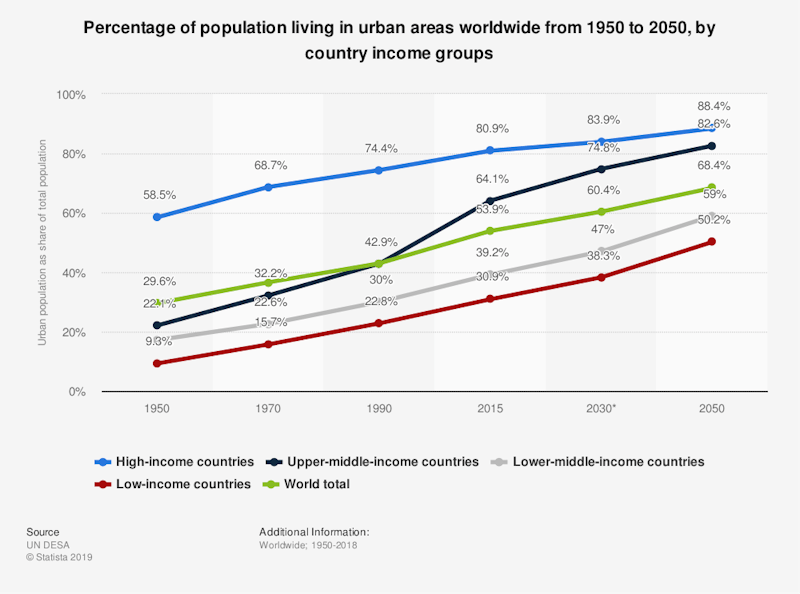Study Notes
Development and Growth Constraints - Infrastructure
- Level:
- A-Level, IB, BTEC National
- Board:
- AQA, Edexcel, OCR, IB, Eduqas, WJEC
Last updated 19 Aug 2019
Closing the infrastructure gap is now crucial in nearly all countries but especially developing/emerging countries who want to make progress towards meeting the SDGs, bring down extreme poverty, improve their export capacity and address numerous environmental challenge. Infrastructure is critical for economic and social development the world over.
Consider for example two specific sustainable development goals:
- SDG 6: “Ensure availability and sustainable management of water and sanitation for all”
- SDG 7.1: “Ensure access to affordable, reliable, sustainable and modern energy for all”
We can see below just how much needs to be done in many developing countries, many of them in sub Saharan Africa and East Asia.
Proportion of population with access to a piped on-premises water supply and improved sanitation, 2015
- Egypt 95%
- Ethiopia 12%
- Rwanda 20%
Source: WHO/ UNICEF
Proportion of population with electricity access, 2014
- Egypt 99%
- Ethiopia 22%
- Rwanda 9%
Source: World Bank World Development Indicators
For many countries there is insufficient investment in infrastructure. In part this is because of the enormous up-front financial commitment and the many years before the full benefits of new projects show fruit. The savings gap in many lower and middle-income nations makes financing big capital projects problematic and full of risk and the result can be a lack of investment which ultimately hampers growth and affects people’s everyday lives. Attracting foreign direct investment to help fund and build infrastructure has become a common feature for many developing countries.
The Chinese One Belt One Road Initiative is an example of a hugely ambitious project stretching across many countries that could have a transforming impact but there are risks involved in relying too heavily on overseas capital.
Why does Asian infrastructure investment fall short despite big demand? #LetsBuildAsia https://t.co/2ToNvGpDiw via @ADB_HQ
— SASEC (@sasecprogram) October 22, 2018

This is clearly expressed in the gaps in rural women’s and girls’ access to infrastructure, services, and social protection. Lack of access to affordable and clean energy at the household level has particular implications for rural women and girls.#RuralWomen@UN_Women pic.twitter.com/NcfIvfaer2
— ICCDI AFRICA (@ClimateWed) October 15, 2018
You might also like
State Intervention – Growth and Development
Study Notes

The Nepalese Infrastructure Deficit
10th April 2015
Selected Sources of Reading on China
Study Notes

Harnessing FDI in Africa
2nd September 2016

Robotic bricklayer builds houses 3x faster than humans
13th April 2017

Hawassa Industrial Park in Ethiopia - Evaluating the impact of FDI
29th December 2017
Coronavirus: How drones in Africa could become life-savers
8th April 2020